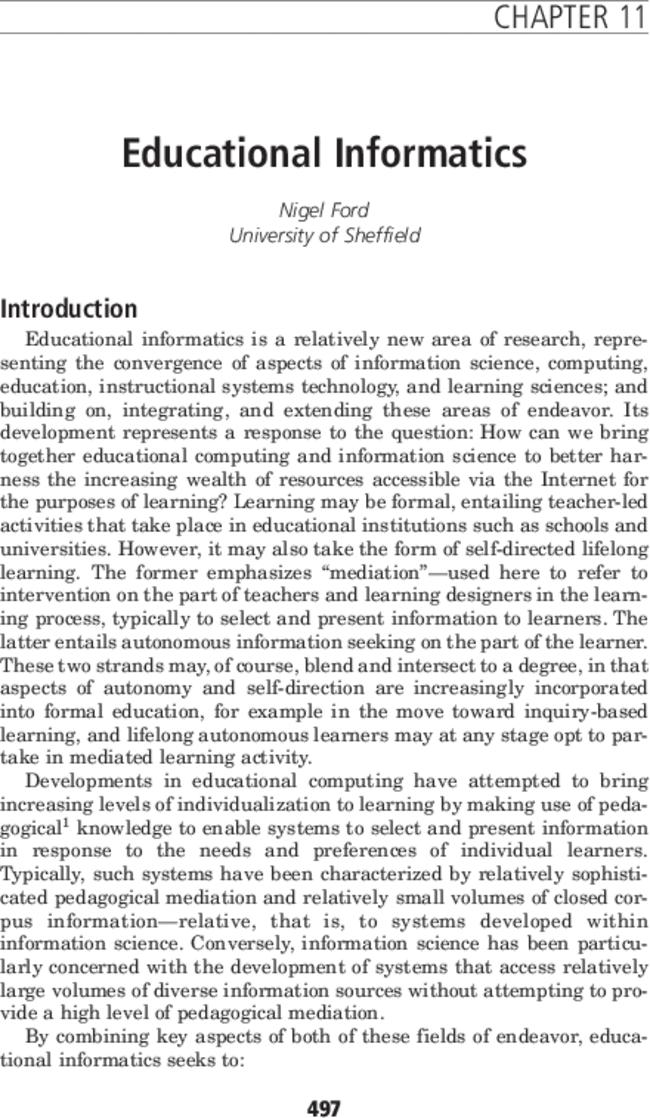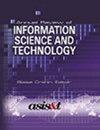Educational informatics
Annual Review of Information Science and Technology
Pub Date : 2009-11-05
DOI:10.1002/aris.2008.1440420118
引用次数: 19
Abstract
Educational informatics is a relatively new area of research, representing the convergence of aspects of information science, computing, education, instructional systems technology, and learning sciences; and building on, integrating, and extending these areas of endeavor. Its development represents a response to the question: How can we bring together educational computing and information science to better harness the increasing wealth of resources accessible via the Internet for the purposes of learning? Learning may be formal, entailing teacher-led activities that take place in educational institutions such as schools and universities. However, it may also take the form of self-directed lifelong learning. The former emphasizes “mediation”—used here to refer to intervention on the part of teachers and learning designers in the learning process, typically to select and present information to learners. The latter entails autonomous information seeking on the part of the learner. These two strands may, of course, blend and intersect to a degree, in that aspects of autonomy and self-direction are increasingly incorporated into formal education, for example in the move toward inquiry-based learning, and lifelong autonomous learners may at any stage opt to partake in mediated learning activity. Developments in educational computing have attempted to bring increasing levels of individualization to learning by making use of pedagogical1 knowledge to enable systems to select and present information in response to the needs and preferences of individual learners. Typically, such systems have been characterized by relatively sophisticated pedagogical mediation and relatively small volumes of closed corpus information—relative, that is, to systems developed within information science. Conversely, information science has been particularly concerned with the development of systems that access relatively large volumes of diverse information sources without attempting to provide a high level of pedagogical mediation. By combining key aspects of both of these fields of endeavor, educational informatics seeks to: CHAPTER 11

教育信息
本文章由计算机程序翻译,如有差异,请以英文原文为准。
求助全文
约1分钟内获得全文
求助全文

 求助内容:
求助内容: 应助结果提醒方式:
应助结果提醒方式:


